Key takeaways:
- Luxury brand partnerships are driven by shared values and a commitment to quality, creating emotional connections that resonate with consumers.
- Successful collaborations enhance visibility and customer engagement by combining strengths and tapping into new markets through strategic alliances.
- Key strategies for successful partnerships include clear communication, authentic storytelling, and providing unique experiences for consumers.
- Challenges such as differing brand identities and maintaining authenticity must be managed carefully to avoid undermining the partnership’s goals.
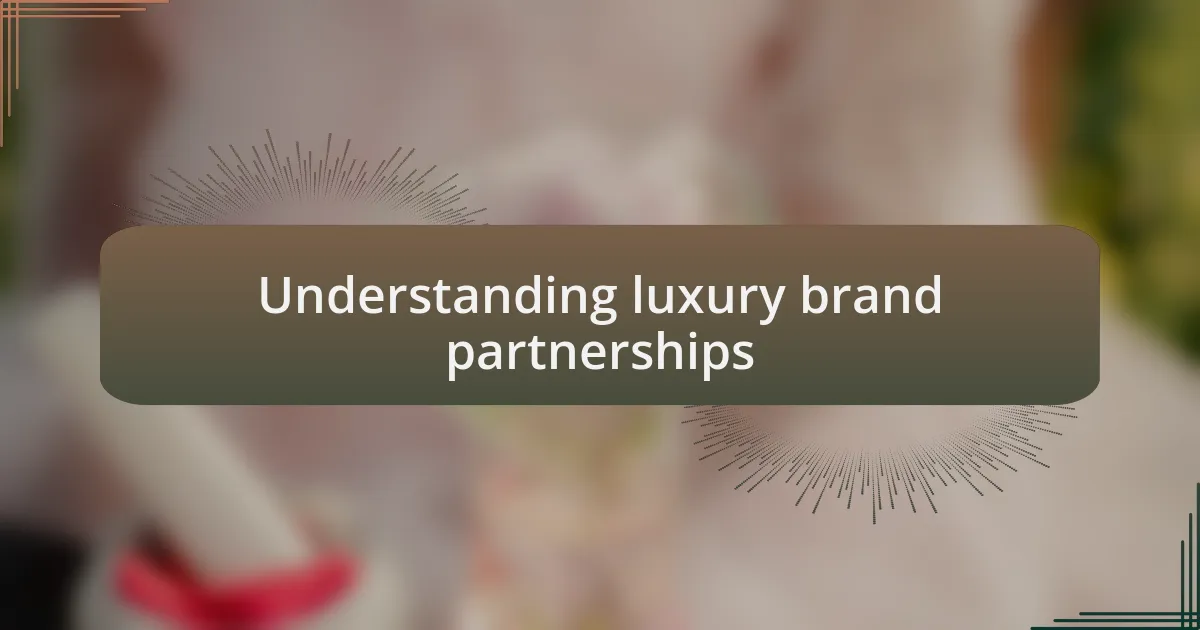
Understanding luxury brand partnerships
When I first delved into luxury brand partnerships, I realized they operate on a level far beyond basic collaboration. These partnerships embody a shared commitment to quality and exclusivity that resonates deeply with consumers. Have you ever wondered why some products leave such a lasting impression? It’s often due to the story behind the collaboration, weaving a narrative that captivates the audience.
Luxury brands often select partners that align with their heritage and values, creating a synergy that’s palpable. For instance, I remember a limited-edition perfume that emerged from a collaboration between a renowned fashion house and an iconic artist. The scent was not just a fragrance, but a statement that spoke to the consumers’ desires for artistic expression and luxury. Isn’t it fascinating how a well-crafted partnership can elevate a product beyond its physical elements?
Moreover, these partnerships draw consumers into an emotional landscape, where the connection between the brands fosters loyalty and admiration. When I witnessed the thrill surrounding a collaborative launch event, I felt the excitement radiating from the crowd. It struck me that these experiences are more than marketing strategies; they cultivate a sense of community among enthusiasts who appreciate the unique narratives that luxury brands create together.
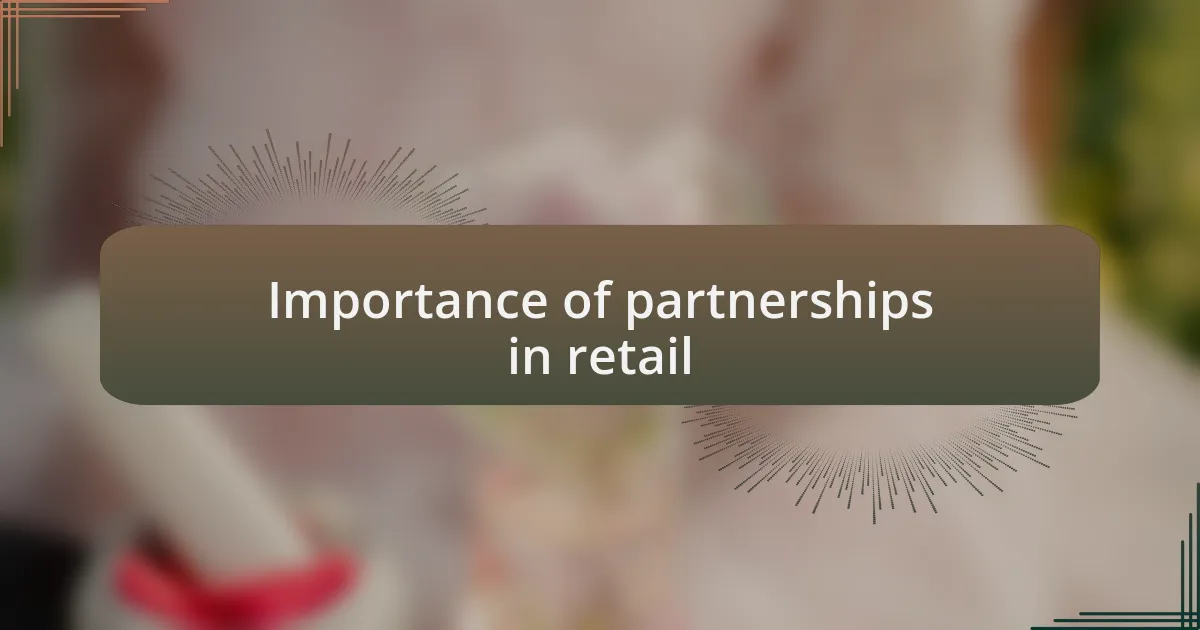
Importance of partnerships in retail
Partnerships in retail are not merely business transactions; they are strategic alliances that can significantly enhance a brand’s visibility and credibility. I once attended an exclusive launch where two luxury brands came together, and the energy in the room was palpable. Seeing how their joint branding created a buzz, I realized that when brands collaborate, they don’t just share resources—they amplify each other’s strengths.
Such affiliations also allow for shared customer bases, enabling brands to tap into new markets. I remember tracking the sales surge following a partnership that combined a beloved luxury perfume brand with a high-end lifestyle magazine. It was intriguing to note that consumers were not just purchasing fragrances; they were buying into the lifestyle that the collaboration represented, something that wouldn’t have been possible without that alliance.
The emotional connection that partnerships cultivate often exceeds mere transactional relationships. I’ll never forget the pride I felt when I purchased a limited-edition scent from a collaboration I had followed closely. It felt like I was part of an exclusive club. This sense of belonging is a powerful motivator for consumers, reinforcing the idea that partnerships in retail can create a deeper engagement and loyalty that transcends traditional shopping experiences.
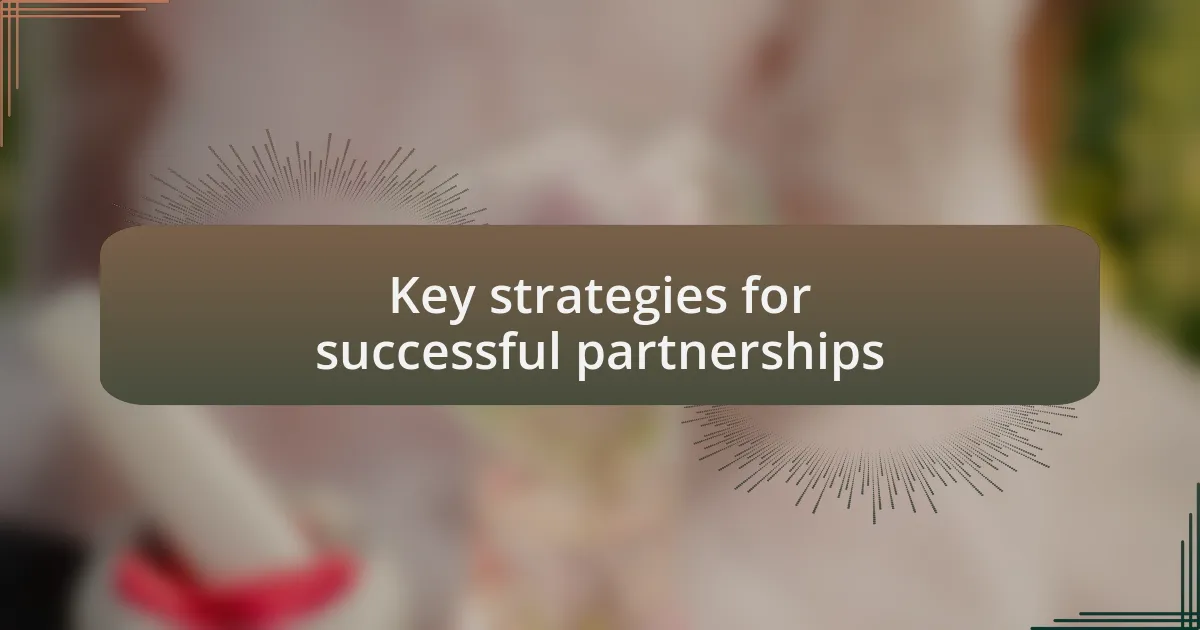
Key strategies for successful partnerships
Successful partnerships hinge on clear communication and shared values. I’ve often noticed that when brands align their missions and goals, the collaboration feels authentic. For example, I once witnessed a luxury perfume brand partner with an artisanal candle maker. They communicated seamlessly, creating a collective narrative that resonated with their audiences, ultimately leading to a successful product launch.
Offering unique experiences rather than just products can greatly enhance partnership success. I recall a memorable event where a perfume brand co-hosted an immersive sensory workshop with a luxury fashion label. Attendees were not just introduced to new scents but were also engaged in the story behind each fragrance. This kind of interactive connection can deepen customer relationships and foster loyalty, making them feel like they are part of a curated experience rather than just transactional participants.
Moreover, leveraging social media plays a crucial role in amplifying the reach of partnerships. I remember seeing a stunning campaign where both brands leveraged their platforms to showcase behind-the-scenes content and customer reactions. It sparked conversations and encouraged followers to share their own experiences. This kind of community involvement feels more personal and can significantly boost engagement levels while creating a buzz that neither brand could achieve alone.
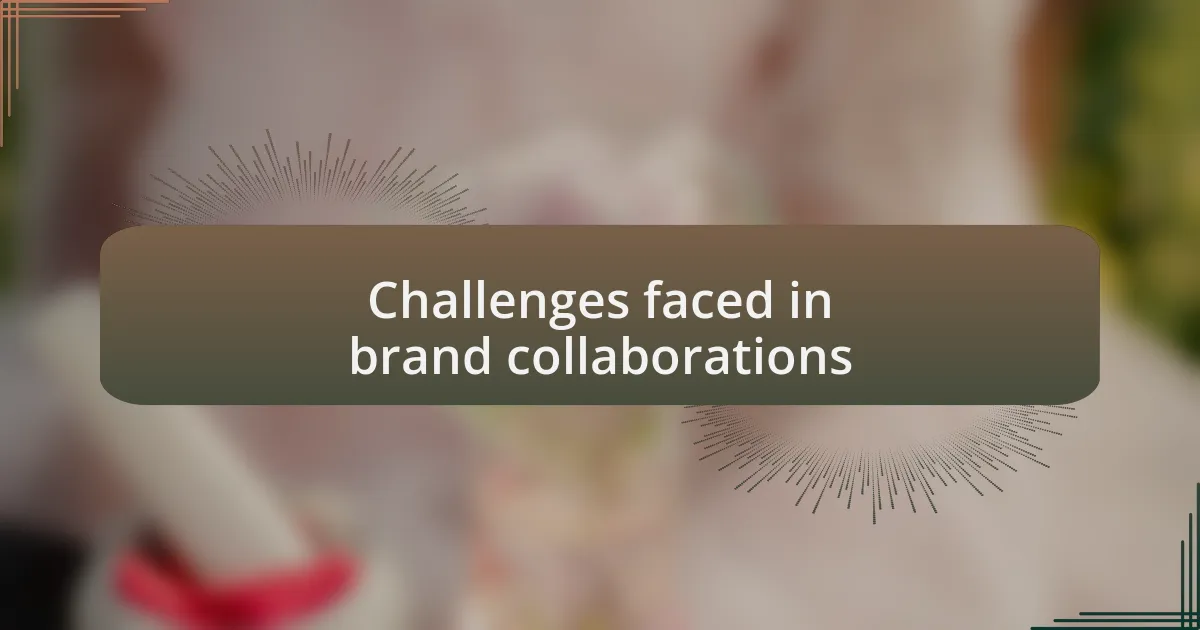
Challenges faced in brand collaborations
Collaborating with luxury brands can be incredibly rewarding, but it’s not without its challenges. I’ve observed that differing brand identities can lead to friction; for instance, when a high-fashion label tried to partner with a vintage-inspired perfume line, their mismatch in style baffled customers. How can two brands with distinctly different aesthetics find common ground? It often requires a lot of brainstorming and compromise to align their visions.
Another obstacle I frequently encounter is the struggle to maintain authenticity. I remember a partnership that faltered when one brand pushed a product that didn’t resonate with its usual audience, leading to backlash. Customers can sense insincerity; have you ever had that feeling when a brand’s collaboration just didn’t match its ethos? This is why staying true to brand values is essential, even in collaborations.
Lastly, logistical hurdles cannot be overlooked. In one case, a well-known fragrance line had to navigate complicated supply chain issues while launching a co-branded product. The anticipation was high, but delays turned excitement into frustration for both brands. These practical challenges can overshadow the creative vision, highlighting the need for thorough planning and adaptable strategies in partnerships. It’s a balancing act that requires constant attention and flexibility.
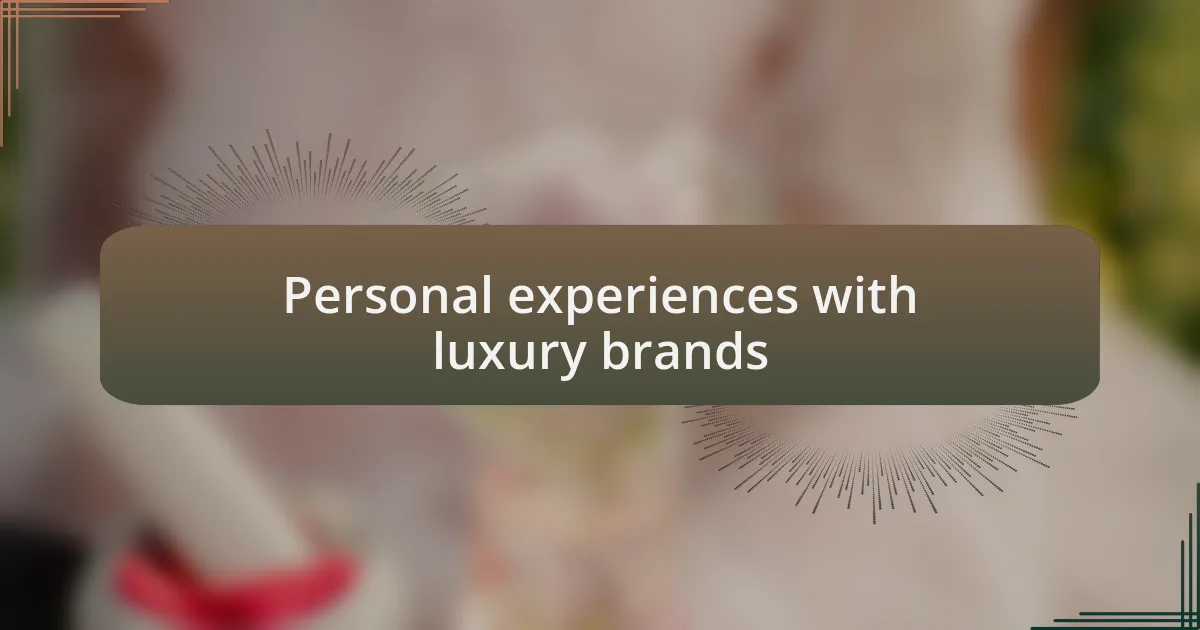
Personal experiences with luxury brands
When I think about my encounters with luxury brands, one memorable experience stands out. I once attended an exclusive launch event for a new fragrance collaboration between a high-end fashion house and a niche perfume brand. The atmosphere was electric, filled with excitement and a sense of privilege. I remember feeling a rush of joy as I got to interact with industry icons. That connection to the brand made the fragrance feel more than just a product; it became an experience.
On another occasion, I participated in a campaign featuring a luxury skincare line. Each interaction with the brand was meticulously crafted to evoke luxury and exclusivity. Yet, amidst the glittering presentation, I couldn’t shake the feeling of uncertainty. Would the product live up to the high expectations set by the brand image? This inherent pressure taps into something crucial: how often do we place our trust in luxury brands, only to be let down when reality doesn’t match the dream?
Navigating personal experiences with luxury brands often feels like walking a tightrope between aspiration and reality. I recall purchasing a limited edition perfume from a famous designer, only to find out that the scent wasn’t quite what I expected. It’s moments like these that make me question whether the allure of luxury is sometimes just that—an allure. How do we reconcile the enchanting packaging and advertising with the actual product? This dichotomy is a constant theme in my journey with luxury brands, leading me to reflect on what they truly represent in my life.
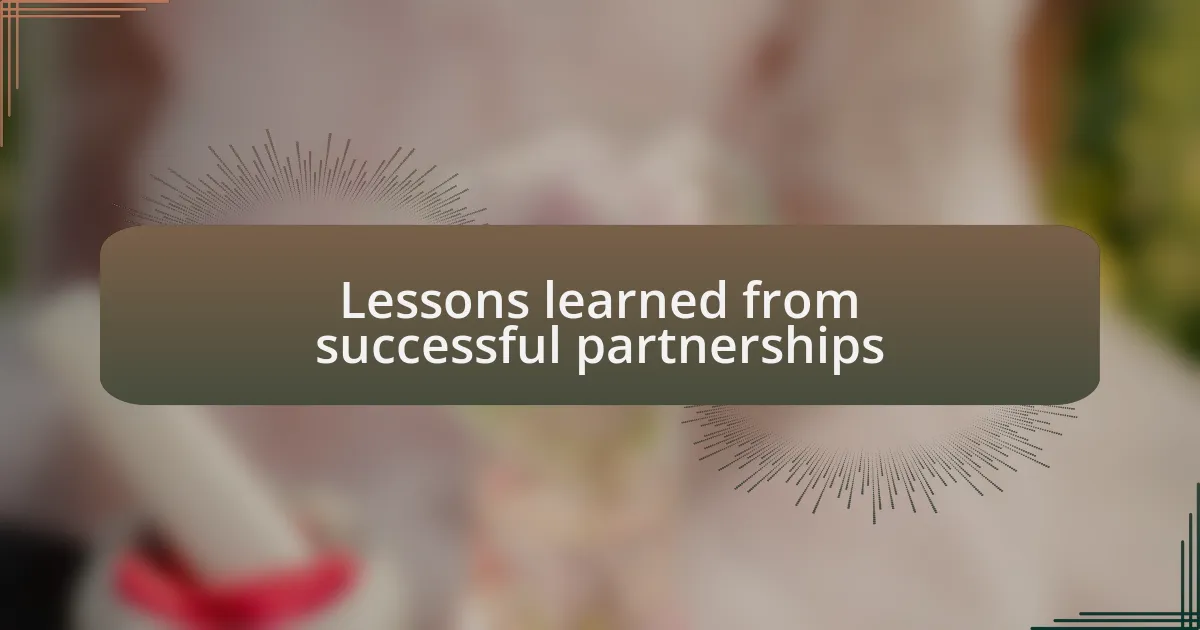
Lessons learned from successful partnerships
Successful partnerships in the luxury sector often hinge on authentic storytelling. I remember collaborating with a renowned design house on a fragrance launch, where every detail—right down to the bottle design—was steeped in a rich narrative. It got me thinking: how crucial is it for brands to weave a story that resonates deeply with their audience? When a story is compelling, it elevates products beyond mere transactions; it creates an emotional connection between the brand and its consumers.
Another important lesson I’ve gathered is the significance of aligning values between partners. During a collaboration with a sustainable perfume brand, we made a conscious effort to highlight ethical sourcing practices. This shared commitment not only strengthened the partnership but also enhanced our credibility with consumers. It made me ponder: how often do we overlook the importance of shared values in business? When partners genuinely reflect each other’s ethos, it paves the way for long-lasting success.
Finally, effective communication throughout the partnership can’t be overstated. I recall a campaign where initial misunderstandings led to a misalignment in marketing strategies. Once we established open lines of communication, everything transformed—the messaging became cohesive and resonated with our target audience. It’s a reminder that, in any partnership, creating a dialogue is essential to achieving the desired outcomes. What would happen if brands invested as much in communication as they do in marketing?